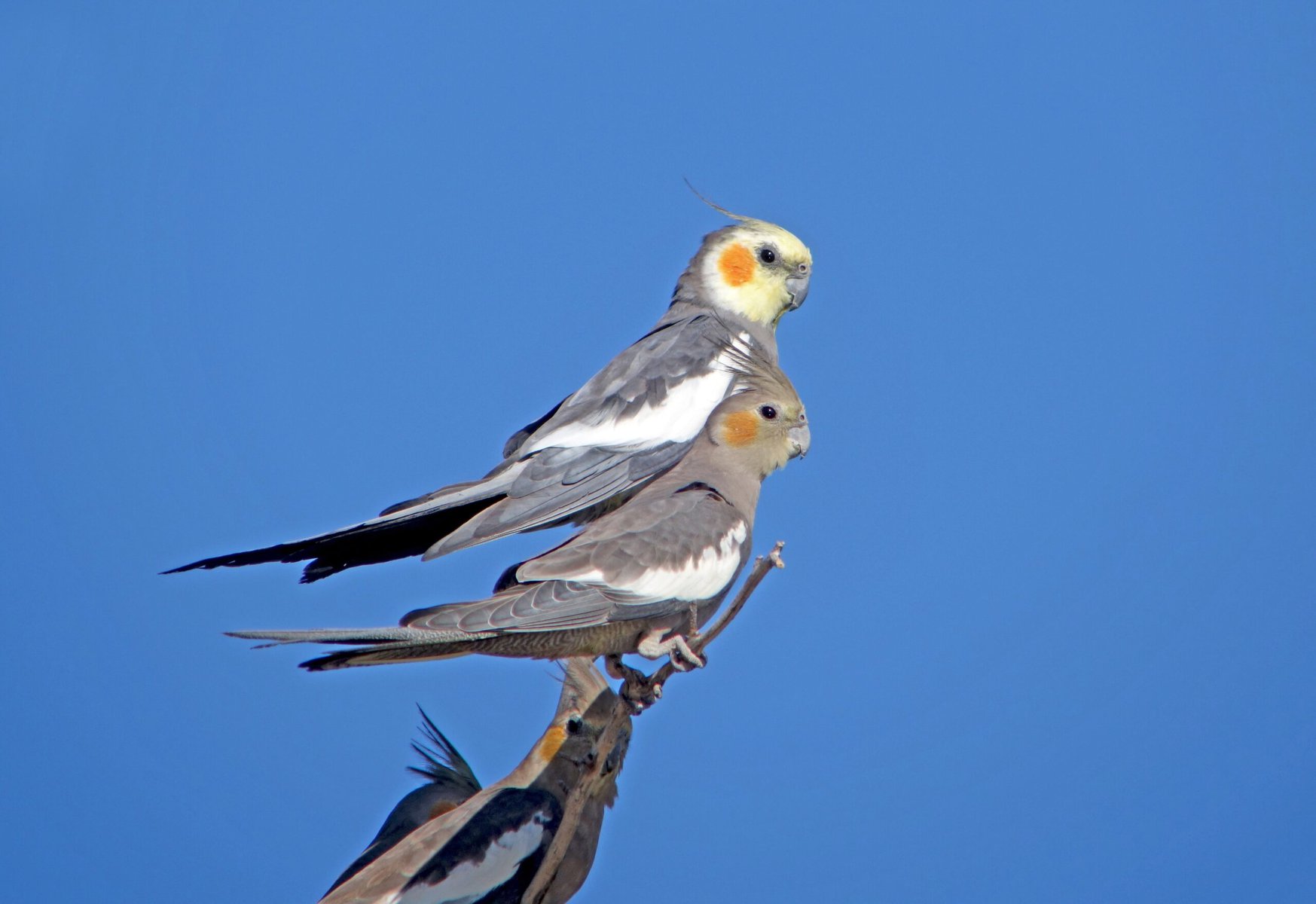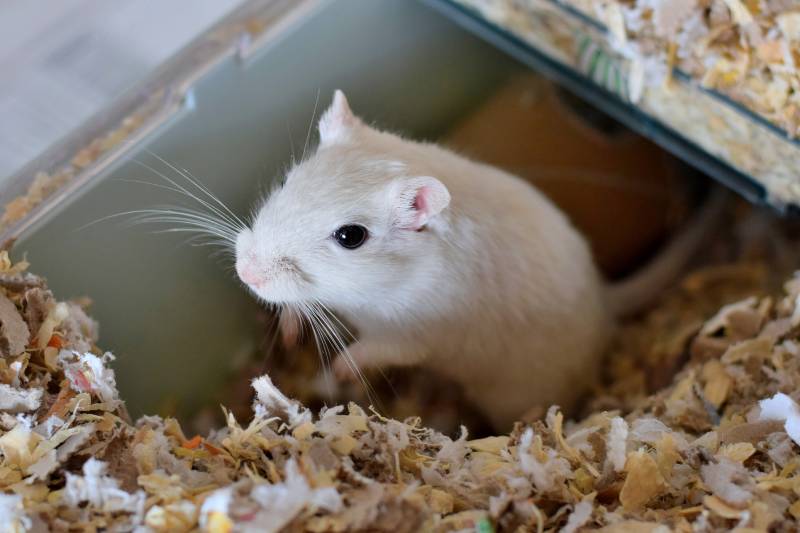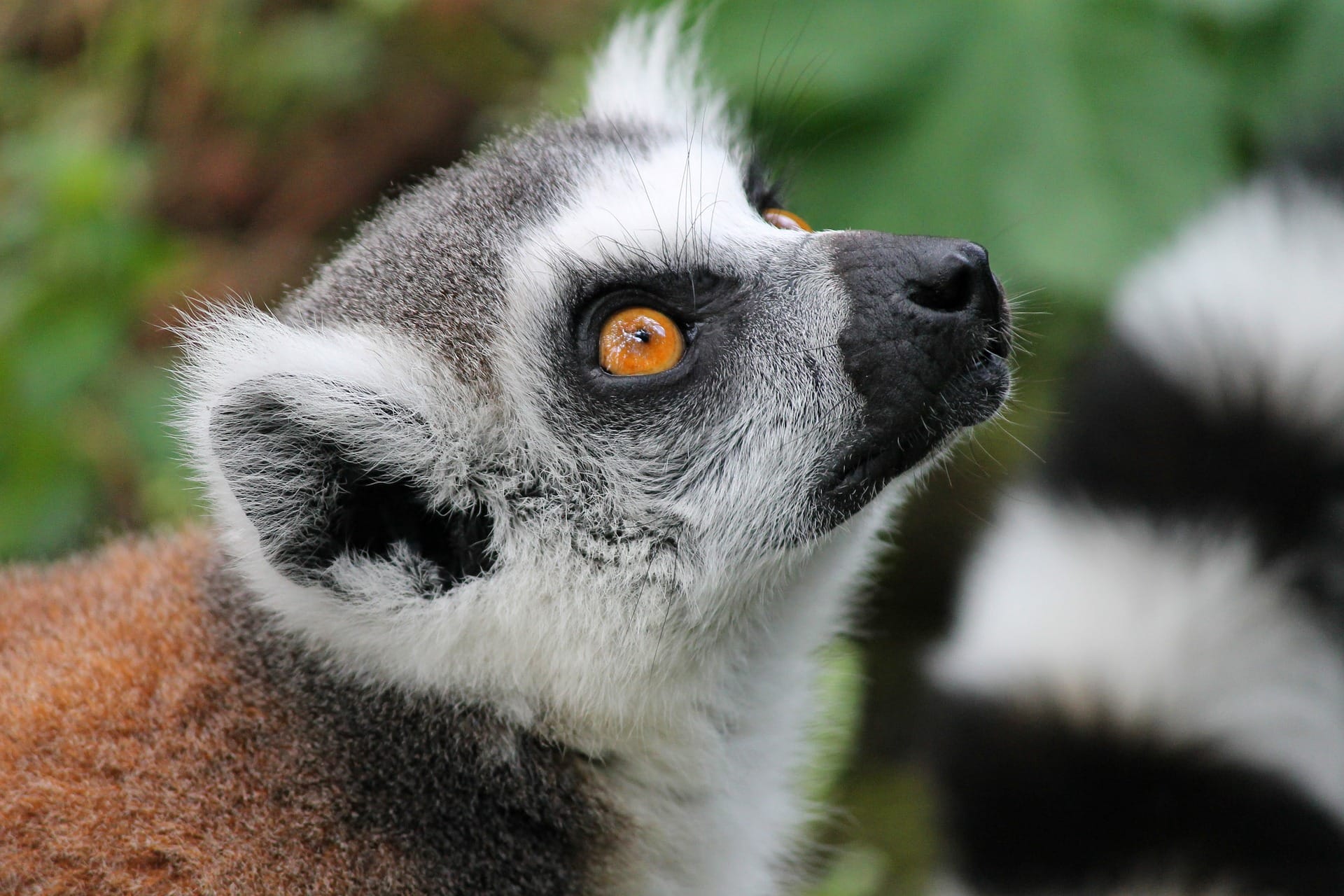VET APPROVED

The information is current and up-to-date in accordance with the latest veterinarian research.
Learn more »Click to Skip Ahead
Cockatiels are serious contenders for being one of the most popular birds to own as a pet. They are beautiful birds with gentle and loving personalities. They are also charming and smart and enjoy spending quality time with their owners.
However, if you’re trying to figure out if your cockatiel is female or male, it can be a little tricky. It’s easy to tell the difference in some color morphs of cockatiels by using their appearance, and such cockatiels have some physical characteristics that can help you figure out the gender. Unfortunately, there are specific color mutations that make this more of a challenge.
You can also examine behavioral traits to possibly help you determine the sex of your cockatiel; though these are admittedly less reliable. Below, we’ll discuss the best methods for determining whether your cockatiel is male or female.

In the context of determining whether your pet is a male or female, the term gender is not as accurate as the term sex. For this reason, scientific literature for animals will often exclude the use of gender. This article is not intended as a scientific source and as such may use the term gender as a reference to a pet’s sex from time to time.
At What Age Can You Tell the Difference in Gender?
Cockatiels often undergo their first molt anywhere between the ages of 6–12 months. Once this molt completes, a cockatiel is considered an adult and physical differences (if any) would be most apparent from then onwards.
Though many people claim that behavioral traits can also be used to sex a cockatiel, it is important to keep in mind that these should be used as a last resort. This is because your cockatiel’s personality (which can be influenced heavily by their experiences) plays a huge role in determining their general behavior, demeanor, and disposition.
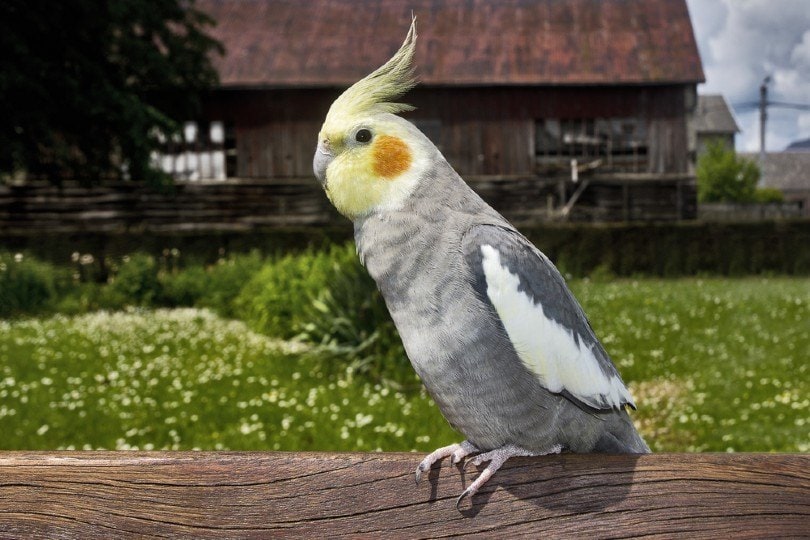
Coloring
If you have the more commonly colored cockatiel, such as the gray, fallow, silver, whiteface, or cinnamon, you can use the following as a guide. This relates only to adult cockatiels that have taken on their adult coloration:
- The male sports a solid-colored yellow face with bright orange cheek patches.
- After the first molt, they will lose the white or yellow bars on the tail feathers and the spots underneath their wing feathers.
- The male whiteface cockatiel will have a pure white face.
- The female is primarily tan or gray with hints of yellow and duller orange cheek patches.
- After the first molt, they keep the yellow and gray bars on their tail feathers and the spots underneath their wing feathers.
- The female albino, like the male, has a pure white face.
It can be easy to tell the difference between the sexes in these common cockatiels, but we’ll examine some of the other color mutations.
Color Mutations
Many of the color variations of the cockatiel make the ability to differentiate between males and females more of a challenge. In most cases, you’ll probably have to go by a DNA test instead.
- Lutino – Females have faint barring on their tails. A Pied Lutino will not necessarily have any barring, so you’ll need to use other methods to figure out the sex.
- Pearl – Females keep the pearled markings, whereas the males will lose the markings. A Pied Pearl male might retain some of the pearl markings.
- Albino – They are also known as Whiteface Lutinos. Unfortunately, because they are pure white, you can’t figure out the sex based on coloring.
- Yellowface – The Yellowface cockatiel has the same coloring as the Gray, minus the orange cheek patches. Males have yellow faces and lose the tail and wing barring, and females have gray faces and keep the barring.
If you’re curious about the many color mutations and types of cockatiels, we can’t recommend the book The Ultimate Guide to Cockatiels enough!

This beautiful book (available on Amazon) features a detailed, illustrated guide to cockatiel color mutations, plus helpful tips on housing, feeding, breeding, and generally taking excellent care of your birds.

DNA Testing
If your cockatiel’s morph doesn’t allow for easy identification of their sex, your best option is to use a DNA test. This is recommended even for cockatiels that are apparently easy to identify by visual appraisal alone, as there are instances where a bird who is apparently male-like in appearance is a female, or vice versa. This happens most commonly in chicks hatched within large flocks where many different cockatiels are allowed to breed by choosing their own mates of various color morphs.
Advances in technology have made DNA sexing very convenient. Though blood testing is definitely an option and something you may consider asking your vet about during your bird’s checkup (after all, blood can be used to test for other indications of health and immune status), feather DNA sexing is the most commonly used method for identifying a parrot’s sex.
This method involves collecting up to 10 feathers from a bird and sending them to a laboratory to sex your parrot. It is convenient, non-invasive, and extremely reliable. We recommend that you consult your veterinarian for more information about feather sexing for your cockatiel.
Behavioral Differences
There are some behavioral differences which might help you distinguish a male cockatiel from a female cockatiel. However, only one of these is a very reliable indicator of a parrot’s sex. The rest are mostly anecdotal and definitely not a guarantee.
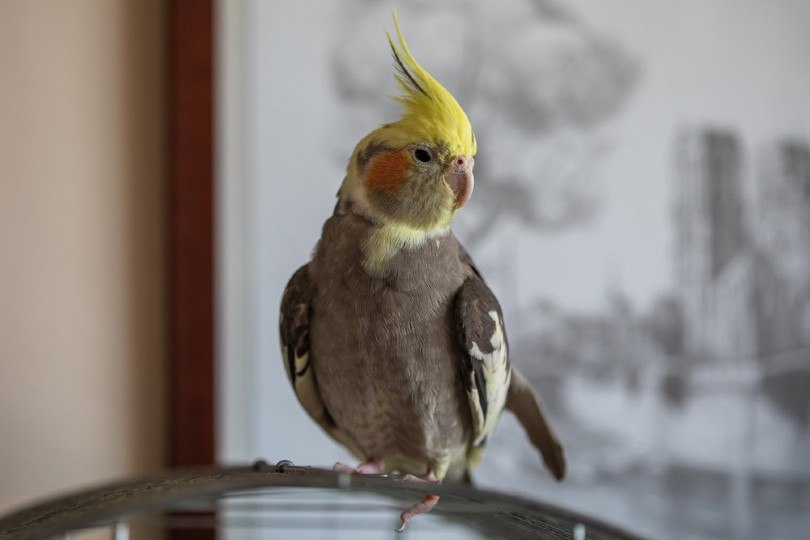
Egg Laying
Egg laying is considered the only definitive behavior that can distinguish a female cockatiel from a male, as only female birds lay eggs. A female cockatiel may lay eggs even in the absence of a male. If you have only one cockatiel and they end up laying an egg, you would know for sure that your pet is a female.
Vocalizing
Male cockatiels are often portrayed as much more vocal than females. They tend to be quieter or don’t sing at all when they are young, but once they are around 6 months of age, they start singing and whistling and mimic certain sounds.
Females are considered less likely to vocalize, but that doesn’t mean that they never sing; they’re just a little quieter than the males.
Mating Behavior
Males are more likely to strut around. You’ll see them sticking their chests out while strutting and engaging in singing at the same time. You’ll see them lift their wings frequently while whistling and singing. They might also try to mate with other objects and toys. You can try placing a mirror in your cockatiel’s cage, as males will be quite fascinated with their reflection, whereas females will lose interest quickly.
Females don’t participate in this type of showing off but will instead droop their wings down, raise their rear end, and make soft cooing sounds.
Cockatiels are mostly monogamous and therefore, you’d only observe these signs when they initially form a pair bond. In order to reserve their energy, a bonded pair wouldn’t display the same signs or mating dances during subsequent breeding seasons.

Personality Differences
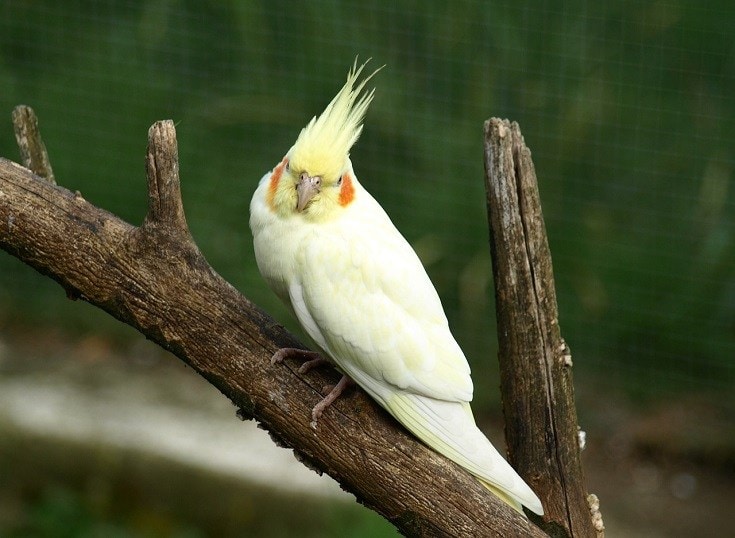
Females
Anecdotally, female cockatiels are more reserved and shy and might hold back if there’s a lot of noise and activity. They will stay back and observe and prepare to fly away if they believe there is a threat.
They love cuddling up on their favorite human’s shoulder and will seek out your companionship a lot of the time. Many females can also be rather spunky.
Males
Male cockatiels are often described as curious, outgoing, and love to show off. They are thought to be noisier and also enjoy spending time with you as you go about your business. Males will gravitate to the parts of the cage where there is the most activity, including other birds and people.
He’ll even become animated in hopping around and whistling to get your attention. Male cockatiels are also not shy to display their dislike of anything, whether it’s for food or not gaining your attention.


Summing Up Behavior & Personality Differences
The following table summarizes the behavior and personality differences described above. It bears repeating that most of these are not set in stone.
| Female Cockatiel | Male Cockatiel |
| Quieter, might screech more | Whistle, call, and mimic sounds |
| Shy and reserved | Seeks attention |
| Seek companionship from favorite people | Will call out to greet you |
| Wary of strangers, might hold back | Will come forward where there is activity |
| Raises up her tail, droops her wings, lowers her back, and coos | Puffs out chest, struts, sings, attempts to mate with toys |
| Mirror isn’t too interesting | Fascinated by a mirror |

Final Thoughts
So, in some cases, it might be relatively easy to identify whether or not your cockatiel is a male or female, but in others, it’s almost impossible short of a DNA test. In many ways, unless you’re planning on breeding your cockatiel, knowing the gender doesn’t matter. Having a great relationship and taking excellent care of your pet is what truly matters in the long run.
Featured Image Credit: Agami Photo Agency, Shutterstock
